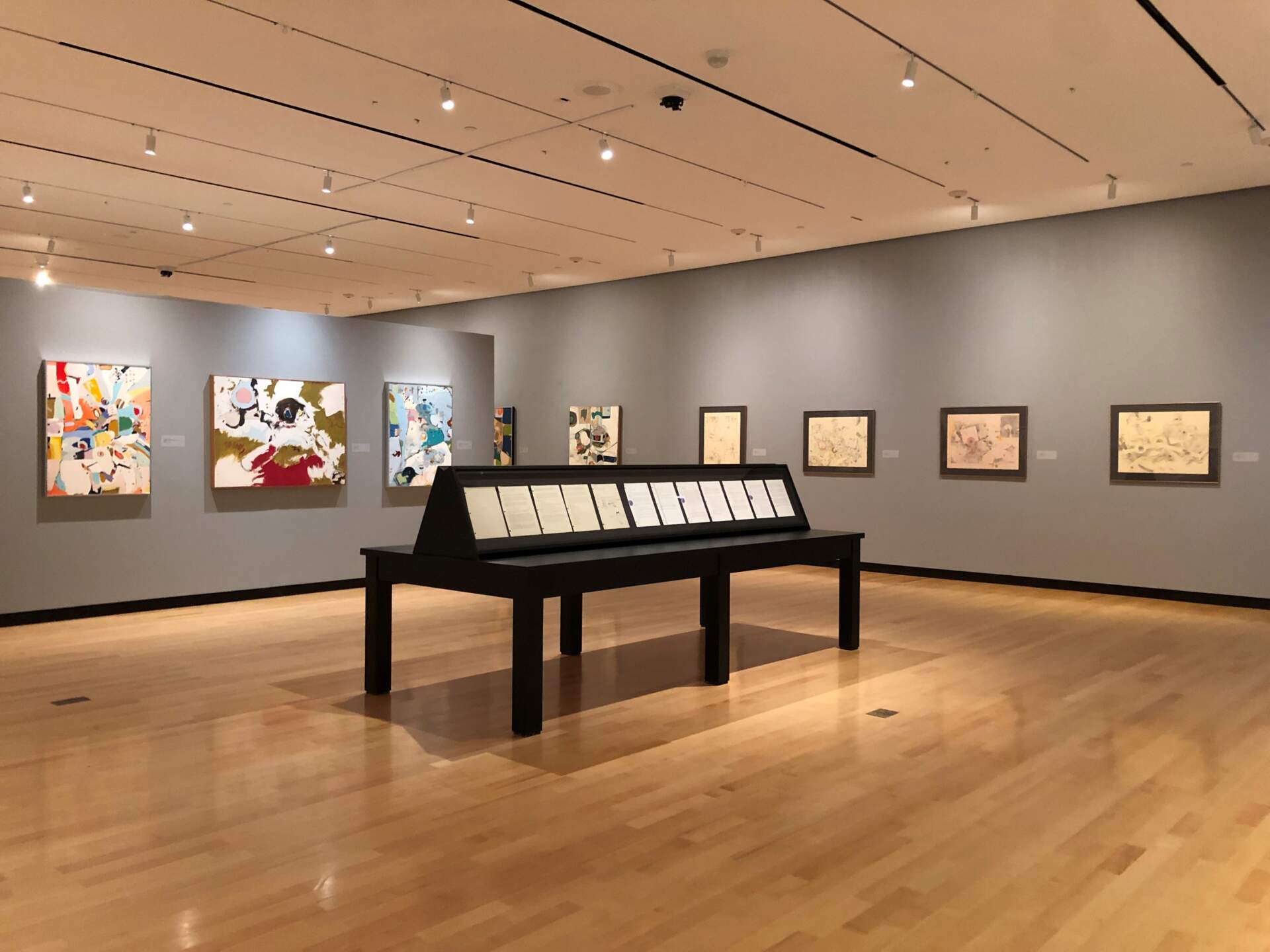
Installation View of James G. Pappas: Relative to Music, 2021
James G. Pappas: Relative to Music
Past
Oct 8, 2021 - May 29, 2022
Featuring a selection of paintings, drawings, screenprints, and photographs, James G. Pappas:Relative to Music contains work that spans the internationally recognized visual artist and educator’s prolific career.
Listening to jazz from an early age, Pappas’ practice pulls strong influence from the music, as well as architecture, color theory, and design composition. Taking a page from the avant-garde process of jazz greats like John Coltrane, Miles Davis, Dizzy Gillespie and Charlie Parker, the techniques employed in his practice start from an understanding of one’s foundation, moving from there to freely destroy, deconstruct and make something completely new from the original. This simple, yet nuanced process reflects an intuitive and improvised rhythm and harmony that brings the heart of jazz into the visual realm. Pappas’ screenprints further exemplify this experimentation, moving across media in new ways to push the bounds of process. His drawings, with intermittent linework, are reminiscent of notes as they move across space; his photographs documenting some of the most influential jazz icons in real time.
Pappas’ abstract expressionist style is representative of the strong influence of jazz, while simultaneously contending with the artist’s experience of the socio-political realities of American life for Black communities. Moving to Buffalo to attend the University at Buffalo in 1959, the growing momentum of the fight for civil rights, the burgeoning Black Arts and Black Power Movements of the 1960s and 1970s, as well as Pappas’ own prior experiences with racism in the south, would all inspire him to contemplate the ways art can be a tool for social change.
Emanating from an idea conceptualized during his undergraduate years, Pappas was the visionary of the Langston Hughes Center for the Visual and Performing Arts in its original iteration, co-founding the organization with fellow artists Clarence Scott, Allie Anderson, Wilhelmina Godfrey, and Hal Franklin. Opening at its 25 High Street location in downtown Buffalo in 1971, the center was a space for inner-city youth to explore creativity and self-expression. The exhibition Founders: The Early History of the Langston Hughes Center for the Visual and Performing Arts, running concurrently to this exhibition, explores the legacy of the formative years of the center and the influence of each of its artists founders more in depth.
Simultaneously, Pappas was also an instrumental force in the formation of the Black Studies Department at the University at Buffalo, fighting for its inclusion and recognition in the university’s curriculum. He would leave the Langston Hughes Center in 1975 to focus on teaching as one of the first professors in the newly formed department, advancing to become its chair from 1977-1990. The classes he has designed and taught in the program continue to exemplify the ways the arts and social justice have merged throughout his work and practice.
The intersections of art, Black culture and empowerment, and social justice translate across Pappas’ work as an artist, educator, and community leader. Like jazz music, his legacy is a lasting testament to experimentation, innovation, and improvisation, breaking the mold to imagine new possibilities and ways of experiencing the world.
This exhibition is presented by The Tower Family Fund, Inc. with support from Deborah A. Abgott, Rita Argen Auerbach, Donald and Marilyn Boswell, John V. Elmore, Reine I. Hauser, Mrs. John T. Kociela, Joel Morawski, James and Dorothy Pappas, Ted S. Pietrzak and Marlene Longdon, Dr. Alvin L. Turner and Dr. Katherine S. Conway-Turner and Nancy S. Weekly. Many thanks to these valued community members who continue to assist with telling this important story.